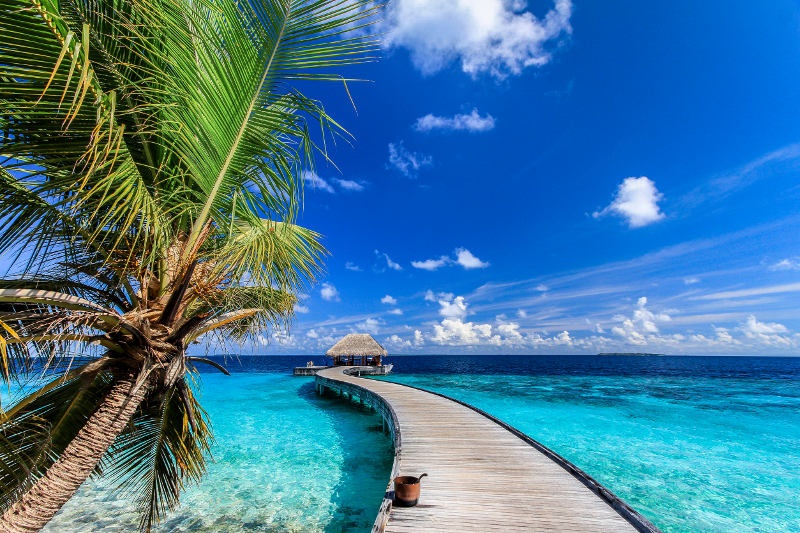
Updated 14 June 2019
In this ultra-connected and increasingly smaller world, where we simultaneously get tweets, trends and the same binge-worthy entertainment, it’s easy to get complacent about visas and visa requirements.
There are many countries Australians don’t need a visa for, although there are still many countries for which we do. Here’s a list of the countries Aussies need a visa to visit and if you still have questions about the visa requirements for the countries you wish to travel to, call 133 133 and talk to a Flight Centre Travel Expert.
Please note: Visas are the individual responsibility of travellers. The information below is to be used as a guide only. Conditions can change suddenly so we recommend checking the Australian Government’s Smart Traveller website for the latest updates.
Cambodia

Yes, for Cambodia you’ll also need a visa. You can get yourself an e-visa through the Cambodian Ministry of Foreign Affairs and International Cooperation. There are only three international airports where the e-visa is valid for entry: Phnom Penh, Siem Reap and Sihanoukville International Airports. The e-visa can also get you into Cambodia at the border crossing points of Cham Yeam (Koh Kong), Poipet (Banteay Meanchey), Bavet (Svay Rieng) and Tropaeng Krael (Stung Treang). If, by some chance, you don’t get yourself an e-visa before you arrive in the country, Australians can still obtain a visa to Cambodia on arrival at air and land entry points. Tourist visas to Cambodia are valid for thirty days.
Canada

To enter Canada, Australians don’t need a visa in the traditional sense, however you will need an Electronic Travel Authorisation (eTA) if you plan to fly into or transit through a Canadian airport. You can get these in advance and it’s worth noting that you can also obtain these on behalf of someone else, such as an older relative who many not have Internet access. If you’re arriving in Canada by car, train, bus or boat, you don’t need a visa or eTA but you do need to bring the right travel documents. See your Flight Centre Travel Expert for more information.
Chile

If you’re visiting Chile on a holiday and expect to be there for 90 days or less, you can get a visa when you arrive. If you’re planning on being in Chile for more than 90 days, you’ll need to arrange a visa before you travel, through an Embassy or Consulate of Chile. Also, Australian tourists entering Chile through Santiago International Airport must pay a ‘Reciprocity Fee’ of about US$117. If you’re travelling to Chile through the United States, transiting in Honolulu or entering the country from another US location, you must also meet US entry/transit requirements. Check with the US Embassy or Consulate, or consult your Flight Centre Travel Expert for more information on this.
China

You’ll require a visa to visit China, it just comes down to which type: diplomatic visa, courtesy visa, service visa and ordinary visa. There are 16 different categories of ordinary visa, with category “L” issued to those who intend to go to China as a tourist. That said, we still recommend that you consult with your Flight Centre Travel Expert about your specific travel needs. You should apply for your visa to China at least a month before you intend to travel. For some short visits, you can obtain a transit visa on arrival, although the Embassy of the People’s Republic of China in Australia strongly recommends that you apply for your visa in advance.
Egypt

If you’re visiting Egypt you can get a tourist visa online (e-visa) or on arrival. Note that if you choose the e-visa, you’ll need to create an e-visa application at least 7 days before your departure. If you’re obtaining your visa when you get there, the Egyptian authorities will only accept US Dollars or Euros.
India

Australian travellers to India will need an e-visa to enter the country, which must be arranged before you arrive. Note that when you arrive in India you’ll need to have a printed copy of the e-visa email confirmation with you. The e-visa is valid for tourism, business and/or medical-related travel for up to 60 days. What’s more, the e-visa is valid for entry through 24 designated airports. If you wish to enter the country through another location or if you’re not eligible for an e-visa, you’ll need to arrange for an Indian visa prior to arrival.
Malaysia

You’ll need a visa for Malaysia if you’re a tourist staying up to 90 days, and you can obtain your Malaysia visa on arrival. While in Malaysia you should carry photo identification with you at all times, and you’ll need your passport to travel between Peninsular Malaysia and East Malaysia (Sabah and Sarawak).
Maldives

Don’t panic if you’re headed to the Maldives and don’t have a visa – the country has what’s called a 30-day ‘visa-on-arrival’. You can apply for this when you touch down at the airport, provided your passport is valid for at least six months from date of entry, you have a valid onward ticket, and you have confirmation of your reservation in a tourist resort or hotel. Most people travelling to the Maldives will meet these conditions and if you don’t, you’ll need to get a visa before you leave Australia.
RELATED: Planning Your Flight? Everything You Need To Know About Tourist Visas
Papua New Guinea

Yes, you will need a visa to enter Papua New Guinea. Contact the High Commission, Embassy or Consulate of Papua New Guinea to obtain a visa or talk to your local Flight Centre Travel Expert.
South Korea

You do need a visa to enter South Korea but it's a relatively easy process. You can get a visa-on-arrival to visit South Korea for up to 90 days.
Russia

You will need a visa to enter Russia and you’ll have to arrange it in advance. Just contact your nearest Russian Embassy or Consulate, or get in touch with a Flight Centre Travel Expert. If you are on a cruise (which is one of the easiest ways to see Russia) special permissions are granted for ships that dock for less than 72 hours in some port cities, including St Petersburg.
Solomon Islands

The Solomon Islands does require you to have a visitor visa, but these are available when you arrive, for stays of up to 90 days. No need to arrange it beforehand, just touch down and relax.
Sri Lanka

To enter Sri Lanka you’ll need a visa, in the form of an Electronic Travel Authority (ETA). You can apply for this online and you’ll need to arrange it in advance, not leave it until you arrive in the country.
Turkey

Australian citizens will need an e-visa to enter Turkey. You can apply for it online at the Turkish government’s official e-visa website. You will need this arranged prior to travel so talk to your local Flight Centre Travel Expert for help in arranging your Turkey visa.
United Arab Emirates

You might imagine that the UAE would have a lengthy visa application process but that’s not the case. Australians are eligible for a free, 30-day visitor visa-on-arrival for the UAE. Touch down, and off you go.
Vanuatu

Technically you do need a visa for Vanuatu, but if you’re visiting for 30 days or less and have a return or onward ticket, you’ll be able to apply for a visa-on-arrival.
Vietnam

To enter Vietnam you must have a visa. You can apply for an e-visa to Vietnam through the Vietnamese Government’s ‘National Web Portal On Immigration’ or you can apply for a tourist visa through the Vietnamese Embassy’s website. If you apply for an e-visa to Vietnam, you’ll be advised within three working days if your visa has been approved. Don’t forget to print out your e-visa to present on arrival in Vietnam.

Writer and content creator
Site quick links
Help & support
Flight Centre acknowledges the Traditional Custodians of Country throughout Australia.
© Flight Centre Travel Group Limited. ATIA Accreditation No. A10412.
*Travel restrictions & conditions apply. Review any specific conditions stated and our general terms at Terms and Conditions. Prices & taxes are correct as at the date of publication & are subject to availability and change without notice. Prices quoted are on sale until the dates specified unless otherwise stated or sold out prior. Prices are per person.





